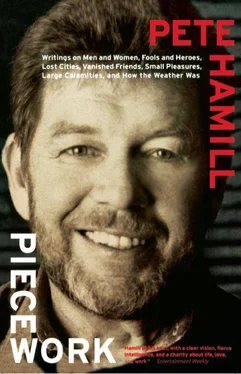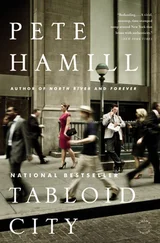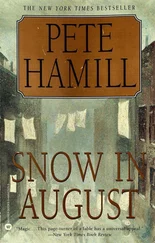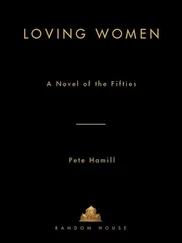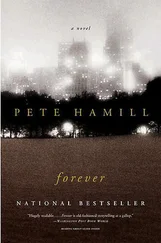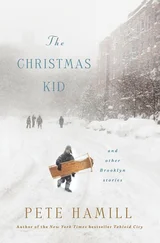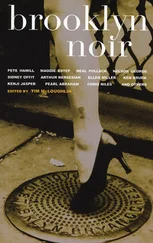Pete Hamill - Piecework
Здесь есть возможность читать онлайн «Pete Hamill - Piecework» весь текст электронной книги совершенно бесплатно (целиком полную версию без сокращений). В некоторых случаях можно слушать аудио, скачать через торрент в формате fb2 и присутствует краткое содержание. Год выпуска: 2009, ISBN: 2009, Издательство: Little, Brown and Company, Жанр: Современная проза, Публицистика, на английском языке. Описание произведения, (предисловие) а так же отзывы посетителей доступны на портале библиотеки ЛибКат.
- Название:Piecework
- Автор:
- Издательство:Little, Brown and Company
- Жанр:
- Год:2009
- ISBN:9780316082952
- Рейтинг книги:5 / 5. Голосов: 1
-
Избранное:Добавить в избранное
- Отзывы:
-
Ваша оценка:
- 100
- 1
- 2
- 3
- 4
- 5
Piecework: краткое содержание, описание и аннотация
Предлагаем к чтению аннотацию, описание, краткое содержание или предисловие (зависит от того, что написал сам автор книги «Piecework»). Если вы не нашли необходимую информацию о книге — напишите в комментариях, мы постараемся отыскать её.
offers sharp commentary on diverse subjects, such as American immigration policy toward Mexico, Mike Tyson, television, crack, Northern Ireland and Octavio Paz.
Piecework — читать онлайн бесплатно полную книгу (весь текст) целиком
Ниже представлен текст книги, разбитый по страницам. Система сохранения места последней прочитанной страницы, позволяет с удобством читать онлайн бесплатно книгу «Piecework», без необходимости каждый раз заново искать на чём Вы остановились. Поставьте закладку, и сможете в любой момент перейти на страницу, на которой закончили чтение.
Интервал:
Закладка:
The old man said something, a long and complicated complaint, and the young man with the machine gun nodded.
“He said that when they came here there is no house to stay in. Too many people everywhere. He said that it was so cold here and they were all afraid because there was shooting in the street. He said that is why he came to this building.”
The young man looked around the dimly lit apartment.
“We took this place for them,” he said proudly. “Why is it empty when people are cold? So we come here and took it. The rich don’t care if people die.”
I asked if the people here would be going back to Burj al Shemali. The teenager started shouting, getting nearly hysterical, then suddenly kicked at a glass-topped table. It tipped over and glasses fell to the floor and smashed.
“She says that there is no more Burj al Shemali.”
Then he turned to me. “Are you finished?” The girl was crying now and the young machine gunner seemed embarrassed. I offered him a cigarette.
“No, you go now,” he said. “Not safe. You go.”
I said goodnight to the people in the room and followed the young man to the door with the baby still crying behind me. In the lobby, the first kid came over, more jittery than ever. His hands were on the gun and he pointed it at me, saying something in high-pitched, rapid Arabic, the barrel of the gun bobbing as he emphasized his points. The second one made a disparaging expression and casually touched the barrel, pushing me aside slightly, and tapping me on the back in the same motion. He was saying goodnight, and telling me to go while the going was good.
The cabdriver was still there and seemed surprised to see me. The rain fell steadily. I got in the back and lit a cigaret and tried to control the shaking of my hands.
II.
TYRE, LEBANON
We left in the morning, heading south along the coast. Men climbed telephone poles near the refugee camp of Ouzai, repairing lines wrecked in the Israeli bombing. A woman picked through the ruins of a house. The road was an inch deep in mud from two days of steady rain and the skies were a sullen gray.
But yesterday, as the first United Nations troops moved south to create a buffer zone between Israel and those Palestinians who live in Lebanon, the first signs of peace appeared. A man with his face wrapped in a faded blue kaffiyeh herding sheep along the edge of the road; farmers with dark sun-scorched faces selling lettuce and lemons; a young girl smiling and waving plastic sacks of oranges at the passing cars. The Syrian soldiers at the first roadblock were relaxed and pleasant, waving us on without a check.
But the aftermath of the brief week of war was everywhere. Trucks loaded with furniture, bedding and human beings still moved north, the contents piled impossibly high, held together with ropes and wires. In Doha, refugees squatted listlessly along the sides of the road, or moved into old abandoned luxury hotels with names such as Hawaii Beach Club, Milio’s and Kangaroo Beach. On the hotel balconies, I could see uniformed young soldiers of the Palestine Liberation Organization, watching the roads, cradling their Kalashnikov assault rifles.
“Everybody here from before went away in the civil war,” the cabdriver said. “Nobody came back. Now it is for the refugees. They just take it.”
A PLO armed personnel carrier went by in the other lane, a mustached young man in a blue sports shirt standing up as if posing for a poster, his hands on the grips of mounted twin .50-caliber machine guns. He was followed by two truckloads of bananas, being hurried north to market in the interval of peace. Another truckload of refugees, another checkpoint, and then we were in Damour.
Some of the most ferocious righting of the civil war took place here. Every building in sight had been demolished or hit. There were mounds of broken bricks everywhere, twisted steel girders, caved-in rooftops. A small grove of olive trees withered in the spaces between two damaged buildings. After all the previous destruction, the Israelis had bombed it again last week. Damour made the South Bronx look like 57th St. And still people were living there: Two men in a makeshift grocery store, listening to a syrupy ballad on the radio and arguing in Arabic; a man alone in an improvised liquor store set up in a shed; six Arab women in brightly dyed gowns pounding laundry in flat pans, living in a garage.
“Most of them are from Tal al Zaatar,” the driver said, shaking his head. “Now they have to live in these places.”
He was referring to the Palestinian refugee camp in northern Beirut that was under siege for 17 months before falling to the Phalangists in August 1976. Between 1,400 and 2,000 of the refugees were massacred then.
“That was terrible,” the driver said. “I was not involved in the war. I am Muslim. I want people to live together, Christian, Jew, whatever. But Tal al Zaatar, that was criminal.”
There was a traffic jam outside Sidon, as eight huge diesel trucks unloaded supplies that had been driven from Iraq. In the main street, kids played pinball in a place called the Morison Club, and others lined up at a small moviehouse to see “MacKenna’s Gold,” with Gregory Peck. Spray-canned political graffiti covered all the walls. For the first time we saw refugees heading south, instead of north.
“We want to go home before the Christians steal everything from our homes,” said a man driving a tractor, upon which were piled his family and seven black plastic bags full of clothing and food. “We left when the fighting started. Now the radio says the fighting is over. So we are going home.”
We passed the last Syrian checkpoint into PLO territory. Cypress trees lined the road. PLO fedayeen were everywhere, all of them carrying guns, a number of them young women. Some were hidden in trees, others walked in twos and threes along the road. They had their own checkpoints, announced in advance by rows of truck tires in the center of the two-lane road.
“The Israelis are over there,” one young PLO officer said, pointing to the rocky hills about three kilometers away. “They have not come any closer. The UN is supposed to go up there today and get them out.”
Outside Aadlun, we saw the shot-up hulk of a maroon Mercedes taxicab, one of two ancient cabs into which 16 members of two Lebanese families had piled to escape the Israeli shelling of Tyre. They left in the early hours of March 17, heading for Beirut. But they were stopped by a group of Israeli commandos who had come ashore looking for a Palestinian leader. The commandos opened fire on the cabs. Fourteen people, including four children under age 5, were killed. At dawn, when reporters reached the site, the two cars were still jammed with corpses. Now the cabs lay like the shells of strange giant beetles, picked clean by ants.
The driver moved along more slowly now. We went through lemon and orange groves, and suddenly we were at the bridge over the Litani River. Lebanese soldiers waved us on. A dead horse lay at the side of the road, its neck jerked back at a right angle. It was beginning to swell.
Then we could see the long low curve of Tyre, with minarets sticking up against the sky. I counted 15 ships, from freighters to fishing boats, sunk in the harbor. We went up Ramel Road, where five apartment houses had been hit by Israeli shelling. Two Arab teenagers came over to see us when we stopped, one of them holding the rusting case of a hand grenade.
“They were out in the water and kept shooting,” said the first boy, who lived in a six-story apartment house with blue trim and white walls. He spoke in a mixture of English and Arabic. “Then the airplanes came from the other side, shooting.” He went around to the back of the house where he had lived, and showed us huge holes in the building’s wall. Blue Venetian blinds rattled in the wind off the harbor. The building was abandoned.
Читать дальшеИнтервал:
Закладка:
Похожие книги на «Piecework»
Представляем Вашему вниманию похожие книги на «Piecework» списком для выбора. Мы отобрали схожую по названию и смыслу литературу в надежде предоставить читателям больше вариантов отыскать новые, интересные, ещё непрочитанные произведения.
Обсуждение, отзывы о книге «Piecework» и просто собственные мнения читателей. Оставьте ваши комментарии, напишите, что Вы думаете о произведении, его смысле или главных героях. Укажите что конкретно понравилось, а что нет, и почему Вы так считаете.
